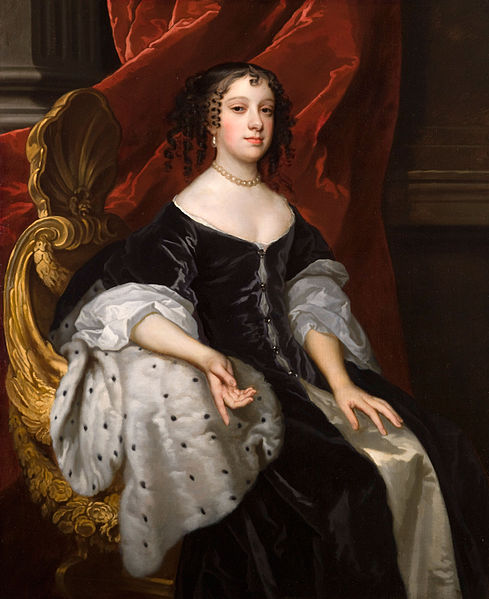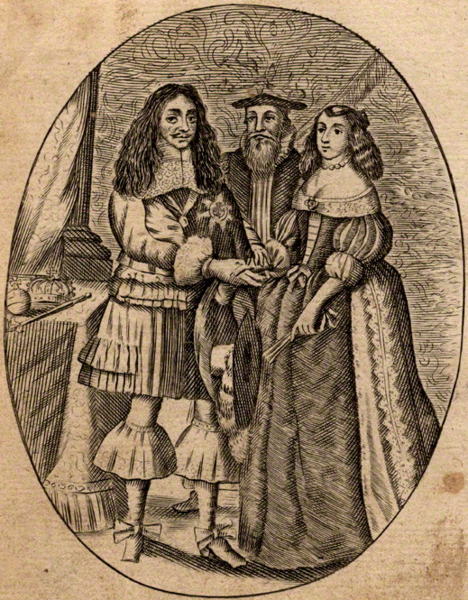Nobody asked for Catherine’s consent to marry Charles.
Yes! When Catherine de Braganza, Princess of Portugal, came of age, they simply sent her portraits to Royalty in France, Austria and other Catholic European countries. But, no wedding proposals materialised. One reason was that Portugal’s arch-rivals — the Spanish — were spreading rumours that the real Catherine was ugly and unfit to bear children. Why? If Catherine married a powerful European monarch, he would ally with the Portuguese; and that would be a diplomatic disaster for Spain! The twenty-two-year-old Catherine was still a spinster, and her Mother was worried. So, she upped the dowry, and that was a smart move. King Charles II of England was attracted by the generous dowry, because his treasury was nearly empty. Cautiously, he sent a spy to Portugal to investigate the Spanish allegations. The spy reported that while Catherine was no stunner, she was rather pleasant. That’s how Catherine got married to Charles, bringing with her a stupendous dowry: two colonies, trading rights in two continents, two million Portuguese crowns and loads of other gifts. In 1662, that was the international deal of the decade!

Catherine was an instant hit with the Queen Mother of England; but her relationship with husband Charles was sadly different. Like many aristocrats of his times, Charles had had a string of mistresses. The fact that he was now married, changed nothing. Catherine, a devout catholic who believed in “until death do us part”, was horrified. Yet, Catherine remained a devoted wife, and even treated his brood of 14 illegitimate children kindly.
England in those days was hugely anti-Catholic, and Catherine herself became a victim. It was the Queen’s honourable duty to produce an heir to the throne. Three miscarriages meant that Catherine “failed” in her duty. Some anti-Catholic advisors counselled the King to divorce this childless Queen and marry a Protestant. Some others even accused Catherine of plotting to poison Charles. Charles had a roving eye, but he was not heartless. He silenced all her critics and flatly refused to divorce her. Meanwhile, the stress caused Catherine to go into a depression and become deliriously ill. To everyone’s surprise, Charles constantly stayed at her bedside and nursed her back to health. In his own strange way, he must have loved her. Perhaps, Catherine’s sincerity had won him over; and perhaps the marriage was indeed ordained in Heaven.
In 1685, Charles was on his death bed: Catherine, the ever-devoted wife, “begged his pardon if she had offended him all his life.” And Charles cried out loud: “Alas poor woman! She asks for MY pardon? I beg HERS with all my heart!”. Like a marriage made in Heaven, it was only death that parted them!

Why is Catherine’s story so exciting to Indians? Because, one of the colonies she presented as dowry was a fishing port called Bombay. We all know what happened thereafter: Bombay rose meteorically to become one of the world’s most vibrant cities: MUMBAI ! I wonder … what if Charles had listened to his Anglican advisors and divorced Catherine? Would the Portuguese have demanded their dowry back and repossessed Bombay? Oops, Bombay might have ended up as a sleepy fishing village left behind by the Portuguese! Thank God the marriage succeeded!
Main Image Credit: Catherine of Braganza departs Lisbon from the Palace Square, 23 April 1662. CatherCâmara [Public domain]
Archives
- January 2022
- December 2021
- November 2021
- August 2021
- March 2021
- February 2021
- January 2021
- December 2020
- November 2020
- October 2020
- September 2020
- August 2020
- April 2020
- March 2020
- February 2020
- January 2020
- November 2019
- October 2019
- September 2019
- August 2019
- July 2019
- June 2019
- August 2017
- February 2017
- January 2017
- October 2013
Featured Posts
- Tales that pots tell: Keeladi excavations AUGUST 18, 2021
- The Last Grand Nawab: Wallajah FEBRUARY 10, 2021
- How Tej Singh became Raja Desingu of Gingee FEBRUARY 5, 2021
- How Shahjahan seized the Mughal throne JANUARY 28, 2021
- Alai Darwaza – Qutub Minar Complex, Delhi NOVEMBER 21, 2020
- Marking History through British buildings NOVEMBER 17, 2020
- The last great queen of Travancore NOVEMBER 7, 2020
- Brahmi and the evolution of scripts OCTOBER 15, 2020
- The Cambodian King of Kanchipuram OCTOBER 14, 2020
- James Prinsep – the man who read the writing on the wall OCTOBER 10, 2020
- Mariamman – the Village Goddess who travelled SEPTEMBER 30, 2020
- Misnamed Monuments of Mamallapuram SEPTEMBER 28, 2020








